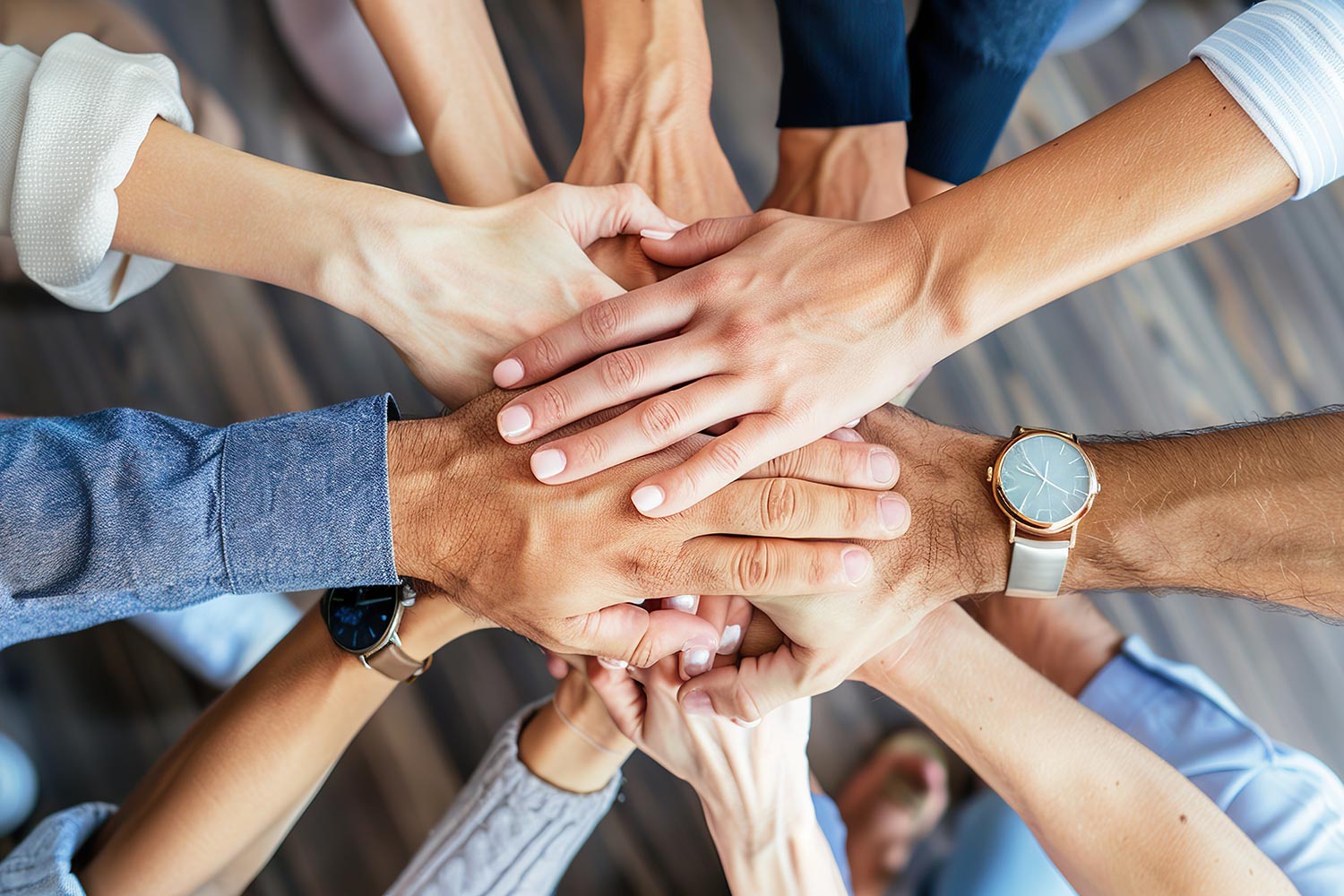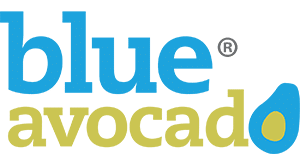How does your nonprofit involve the local community in its programs and initiatives?
Nonprofit leaders share their top strategies for boosting community engagement in programs and initiatives with the Blue Avocado community.

Community engagement is the lifeblood of many successful nonprofits. By fostering strong connections with the people they serve, organizations can create lasting impact and build a sense of shared ownership.
When we recently asked the Blue Avocado community: “How does your nonprofit involve the local community in its programs and initiatives?” — and, once again, nonprofit leaders came through!
Here’s a summary of some of the best answers we received:
Partner with Local Businesses and Offer Valuable Information
As a historical society, we obviously link with other history-focused nonprofits, but we have developed many other relationships in both the public and private sectors.
Our community has an active Main Street program. In the past two years, we partnered with Main Street to successfully nominate a large portion of the downtown to the state and national registers.
As an outgrowth of that nomination, the society offers no-cost, on-site lecture presentations to any business within the historic district — a program that was fully booked within days of the offer. A fully researched walking tour will launch this summer, coving the historic downtown.
For several years, the local library has been the site of free public lectures and a music organization highlighted a WWII-era presentation with a reception to visit our museum’s local military service exhibit.
In summer, we have a family oriented canoe race beginning at a riverside park, which is sponsored by an outdoors outfitter. This is part of a strategy to partner as much as possible with our business members. Historic home tours have also been a rich source of community partnerships.
We offer no-cost speakers to service organizations for their meetings and have partnered with a landscaper to create a Memorial Garden at our main campus. Over the years, a significant number of local businesses have volunteered time and expertise, as well as in-kind gifts, to the development of both our museum sites and exhibit development.
— Karen Sailer from Eagle River Historical Society
Meet Your Community Where They Are
Learning Rights Law Center achieves its mission of education equity by working closely with community groups, organizations, and service providers to conduct Know Your Rights trainings and start legal intakes.
We also listen to our communities to ascertain commonalities of barriers affecting students with disabilities in their public school education. By meeting our communities where they are, we have been successful in organically growing our programs and becoming a trusted resource.
— Randi Sunshine from Learning Rights Law Center
Don’t Underestimate the Value and Power of Volunteers
The Crayon Initiative, a nonprofit that collects used crayons and remanufactures them into new ones that are shipped to pediatric hospitals for use in therapeutic arts programs, is 100% dependent on its volunteer base which includes schools, community groups, businesses, and dedicated retired people looking to give back.
From crayon collection campaigns around the country to the sorting, melting, molding, and packaging of the new crayons done in Danville, CA, the volunteers are the lifeblood of the organization. We build a sense of camaraderie, community, and fun which helps make us successful in carrying out our mission of bringing happiness to hospitalized children.
— Robin Andrew from The Crayon Initiative
Host Local Events to Foster Collaboration and Increase Mission Awareness
The DC LGBTQ+ Community Center engages the local community through initiatives that correspond with our mission and vision. We partner with local health organizations to offer free services like HIV/AIDS testing and other resources tailored to the LGBTQ+ community.
We host art exhibits, performances, and workshops to showcase LGBTQ+ talent and foster self-expression, while recruiting facilitators to lead peer support groups.
Our public awareness campaigns and collaboration with local organizations advocate for policy changes that protect LGBTQ+ rights. We encourage volunteerism, allowing individuals to actively contribute to advancing LGBTQ+ causes.
These efforts create a supportive, inclusive space where community members feel empowered and connected.
— Paul Marengo from The DC LGBTQ+ Community Center
Build Kinder Communities Through Youth-Led Initiatives and Local Partnerships
Nathan’s Butterflies is a “homegrown” community nonprofit started by a 6-year-old after the death of his baby brother, Nathan. Our mission is to inspire children and teens to engage in the community with acts of kindness.
This organization supports the “kindness project” with financial, organizational, and necessary supplies to ensure a successful project. Our founder is now 14 and passionately networks with his sports team members, local teachers, librarians, police, and firefighters — and considers them his community partners.
Recently, he has met with our local university, Binghamton University, and found a willing and able group of different deans across multiple specialties at the university.
This opened the door to receive student involvement in projects and help with IT, marketing, and nonprofit business law. Our community partners are vital to our success.
— Frances Bidwell from Nathan’s Butterflies
Support and Strengthen Existing Projects
Friends of the Moshassuck is pretty low key and more of a cooperative than a traditional nonprofit. Whoever wants to can bring us a project they want to do in the watershed.
But how we interact with the community is not by bringing them projects, it is in joining the thing they have going on and offering our watershed perspective where it helps.
It is not “come join us,” it is more “some of us are happy to pitch in and help with what you are doing,” and when fighting about economic development, green space, and issues of how to conduct public meetings, what we knew proved helpful — and now we collaborate all the time.
It is not trying to create initiatives, it is finding ways to help what is already going on.
— Greg Gerritt from Friends of the Moshassuck
Connect to Rural Areas Through Personal Touches and Local Presence
Our local community is the least populated county in California, and it is geographically split by the Sierra Nevada mountains. Reaching out to our artists and audiences is challenging.
We have no radio or TV stations, no daily newspaper. Word of mouth, as quaint as it may seem, is a favorite method of information! Flyers posted at one of our two post offices and at our several businesses attract visitors and locals alike.
Of course, we take advantage of social media. We email our monthly newsletter to several hundred folks. We are discovering that people like the homey personal touch, so we text, email, telephone, and, best of all, go out and about to engage people in person.
Attending the weekly lunches at the Washoe Tribal site, being present at all county board of supervisors meetings (where we speak during public comment to let our events and ambitions air), are some of the ways we do our outreach.
Sometimes, the universe puts someone in our path, and we love capitalizing on that encounter to add an artist to an upcoming show or to exchange business cards and add to our newsletter mailing list. Loving what we do and wanting others to enjoy it, too, promotes our constant, enthusiastic outreach whenever and wherever we can.
— January Riddle from Arts and Culture Alpine County
Partnerships Between Local Volunteers and Businesses Drive Support
At My Friend’s Place, we know it takes a community to help a young person exit homelessness. That’s why we integrate community connection into all our volunteer programs — whether it’s a local business serving meals or an individual leading an art workshop, we invite neighbors to work alongside young people.
We also partner with Employee Resource Groups (ERGs) to create meaningful volunteer opportunities during cultural heritage months like Pride, Black History Month, and Latinx Hispanic Heritage Month.
Beyond direct service, we weave advocacy into our programs, empowering our community to help drive the systemic change needed to uplift young people for the long term.
— Erin Parker from My Friend’s Place
Build Community Through Local Hosts, Free Events, and Connections
We are a chamber music festival and most of our musicians are from outside our community. While non-local, these musicians become a part of our home while they are here, forming relationships with their home hosts as well as the sponsors and volunteers who support their performances in all ways (all emphatically encouraged by our staff).
It’s a small town, so when they are out and about, they are often recognized by patrons who are never shy about chatting. While many of our concerts have paid admission and happen in a formal performing arts center, we also include free experiences for all ages through a kids’ concert, an open rehearsal for seniors, and small, shorter concerts away from our main venue, at community buildings across our island.
It’s all about visibility and building relationships, and it works beautifully.
— Anita Orne from Orcas Island Chamber Music Festival
Engage Local Leaders, Build Partnerships, and Tackle Critical Issues
Lead for America actively engages the local community by building partnerships with local organizations, government entities, and community leaders to address their most pressing challenges.
Through initiatives like the American Connection Corps, a year-long service program, AmeriCorps members are placed with local nonprofits or government agencies where they tackle critical issues in the communities they know best.
This model not only strengthens community organizations but also cultivates a network of skilled leaders committed to serving local citizens for years to come. By empowering a network of empathetic leaders, we bring digital opportunities to more communities and equip individuals to make a lasting impact through national service.
— Jennifer McKinney from Lead For America
Utilize Resources, Volunteers, and Collaborative Support
We are offer an outreach office that provides partnership with our neighbors to find the resources needed to maintain housing, utilities, health, and food security. We have a thrift shop to help fund our programs.
All items we sell are donated by the community around us. The thrift store engages the community by sending unsellable textiles to the rescue mission for sale or recycling.
As an organization, we work with about 100 volunteers each year to assist in our mission. They care for the sorting, tagging, pricing, and sale of donated items in the thrift store, assist community members with tech challenges, provide hospitality to visitors, provide labor for yard and home care projects, etc.
Our outreach office welcomes like-minded agencies to use an office space (at no charge) to provide the services we do not offer, such as the county housing department, a domestic violence agency, a family counselor, etc. We also partner with the local extension office, for dental professionals and dental students from a community college to provide health resources. We partner with Weis Markets and the YMCA to provide food.
And as many nonprofits do, we partner with local businesses to support fundraisers or collections of needed items. The mayor of our town and owners/employees of local businesses serve as members of our board of directors.
— Missy Miller from Seton Center, Inc.
Involve the Local Community Through Hands-on Opportunities
Programs and projects are amplified when they involve the community in engaging in solutions.
Wildbluesea works to empower residents with accurate information and clarity regarding the impact of their lifestyles in order to make informed decisions that restore the health of local waterways.
To connect the whole community to the value of mangroves and living shorelines, we are displaying living red mangrove propagules on our business partners’ windows to spark curiosity and conversation by bringing the issue into the community.
Later, we’ll give residents hands-on opportunities to prepare the mangroves for growing and planting as well as holding socials and little events to celebrate mangroves. This reaches people who otherwise wouldn’t be engaged.
Our next project focuses on bringing vertical oyster gardens into the community, providing opportunities for hands-on contributions to solve the issue of water quality.
— Linda Emerson from Wildbluesea
Utilize Community Volunteers, Students, and Feedback to Drive the Mission
Cat Tales Wildlife Center engages the local community through robust volunteer programs, providing hands-on experience in animal care, conservation, and education.
We partner with local schools, universities, and organizations to offer internships and collaborative learning opportunities.
Community input is a priority, gathered through surveys like our Friends of the Wild Things Survey to shape programs that reflect local interests and needs.
— Debbie from Cat Tales Wildlife Center
Create Brand Awareness by Participating in the Local Community
We are just starting out as an organization, but local community is core to everything we do. We have had a table at a local resource fair, sponsored a lane at a local bowling fundraiser, and contributed a prize basket for the library bingo night.
Our members also attend local city committee meetings, like for school board, friends of the library, and city beautification. We even closely watch our local community Facebook and social media pages for aligned city events and happenings.
These initiatives help create brand awareness in our community and opportunities to recruit possible volunteers.
— Kathryn from Hazel Park Civic Action Network
Be Present in the Community and Support Other Nonprofits
In addition to being present at local events like Earth Day celebrations and farmers’ markets, our creative reuse nonprofit just instituted a personal shopper program to help educators who cannot always make it to our warehouse find materials for their programs.
We also offer workshops at our facility to instruct people in different ways to use our rescued materials instead of “buying new” and we partner and support other local nonprofits whenever possible.
— Kathy Bonte from FabMo
Note: The opinions and product/service recommendations expressed above are solely those of the participants and do not necessarily represent those of Blue Avocado. Submissions may be edited for length and clarity.
Your Voice Matters!
Help other nonprofits grow by sharing your knowledge and insights with a chance to be featured in the next Ask the Blue Avocado Community results.
You might also like:
- What is your nonprofit’s approach to planning for leadership succession?
- How can nonprofits better collaborate and share resources with each other?
- What area of your nonprofit has benefited the most from having a specialist on your team?
- What has been a “happy accident” that ended up benefitting your nonprofit?
- What do nonprofits struggle with the most?
You made it to the end! Please share this article!
Let’s help other nonprofit leaders succeed! Consider sharing this article with your friends and colleagues via email or social media.
About the Author
Blue Avocado is an online magazine fueled by a monthly newsletter designed to provide practical, tactical tips and tools to nonprofit leaders. A small but mighty team of committed social sector leaders produces the publication, enlisting content from a wide range of practitioners, funders, and experts.
Articles on Blue Avocado do not provide legal representation or legal advice and should not be used as a substitute for advice or legal counsel. Blue Avocado provides space for the nonprofit sector to express new ideas. The opinions and views expressed in this article are solely those of the authors. They do not purport to reflect or imply the opinions or views of Blue Avocado, its publisher, or affiliated organizations. Blue Avocado, its publisher, and affiliated organizations are not liable for website visitors’ use of the content on Blue Avocado nor for visitors’ decisions about using the Blue Avocado website.







